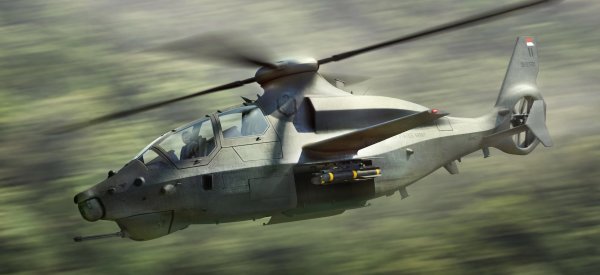

The Army has selected Bell Helicopter and Sikorsky to develop prototypes to face off in phase two of the service’s Future Attack and Reconnaissance Aircraft competition, officials announced on Wednesday.
The two airframes — Bell’s articulated rotor Invictus and Sikorsky’s compound coaxial rotor Raider X — will participate in the competitive phase of the program on March 25, 2020.
The eventual winner of the competition will replace both the Army’s recently-retired OH-58D Kiowa Warrior scout copters and half of the service’s AH-64 Apache fleet in the coming years.
According to Defense News, the Army wants its selection for the FARA program to be capable of cruise speeds of at least 180 knots at altitudes of 4,000 feet.

Bell claims the Invictus —whose armaments include a 20 mm cannon, integrated munitions launcher, and support for air-launched effects integration— can easily maintain 180 knots over a combat radius of 135 nautical miles with minimal control of its two-person crew thanks to the aircraft’s fly-by-wire technology
“The selection of the Bell 360 Invictus to continue in the FARA program builds on our decades-long legacy as an innovator in reconnaissance rotorcraft supporting the maneuver force,” Bell Helicopter president and CEO Mitch Snyder said in a statement, per The War Zone. “Our team has applied innovative thinking with tested technology to give the Army a low-risk option to fulfill its requirements on an aggressive schedule.”

By contrast, the Sikorsky S-97 demonstrator that eventually became the Raider X claimed a cruising speed of upwards of 200 knots while hauling weapons, offering a significant boost in both range and performance over airframes like the Kiowa.
“Through our mature S-97 RAIDER technology demonstrator, we continue to optimize our FARA solution, which will provide the Army with an integrated weapon system that combines speed, range, maneuverability, survivability and operational flexibility,” Lockheed Martin VP Andy Adams said in a separate statement. This approach is driving down risk and will result in an aircraft solution that is capable of executing the Army’s joint all-domain operations.”
According to the Army, the service is in desperate need of an aircraft “capable of operating in a complex airspace and degraded environments against peer and near-peer adversaries with an advanced integrated air defense system,” a reflection of U.S. military’s gradual reorientation towards traditional adversaries like Russia and China in the era of “great power” competition.
“The Future Attack Reconnaissance Aircraft is the Army’s number one aviation modernization priority and is integral to effectively penetrate and dis-integrate adversaries’ Integrated Air Defense Systems,” assistant secretary of the Army for acquisition, logistics, and technology Dr. Bruce D. Jette said in a statement. “It will enable combatant commanders with greater tactical, operational and strategic capabilities through significantly increased speed, range, endurance, survivability and lethality.”
Sikorsky and Bell were two of five competitors vying for a chance at the Army’s FARA contract alongside Boeing, Karem Aircraft, and a partnership between AVX and L3.